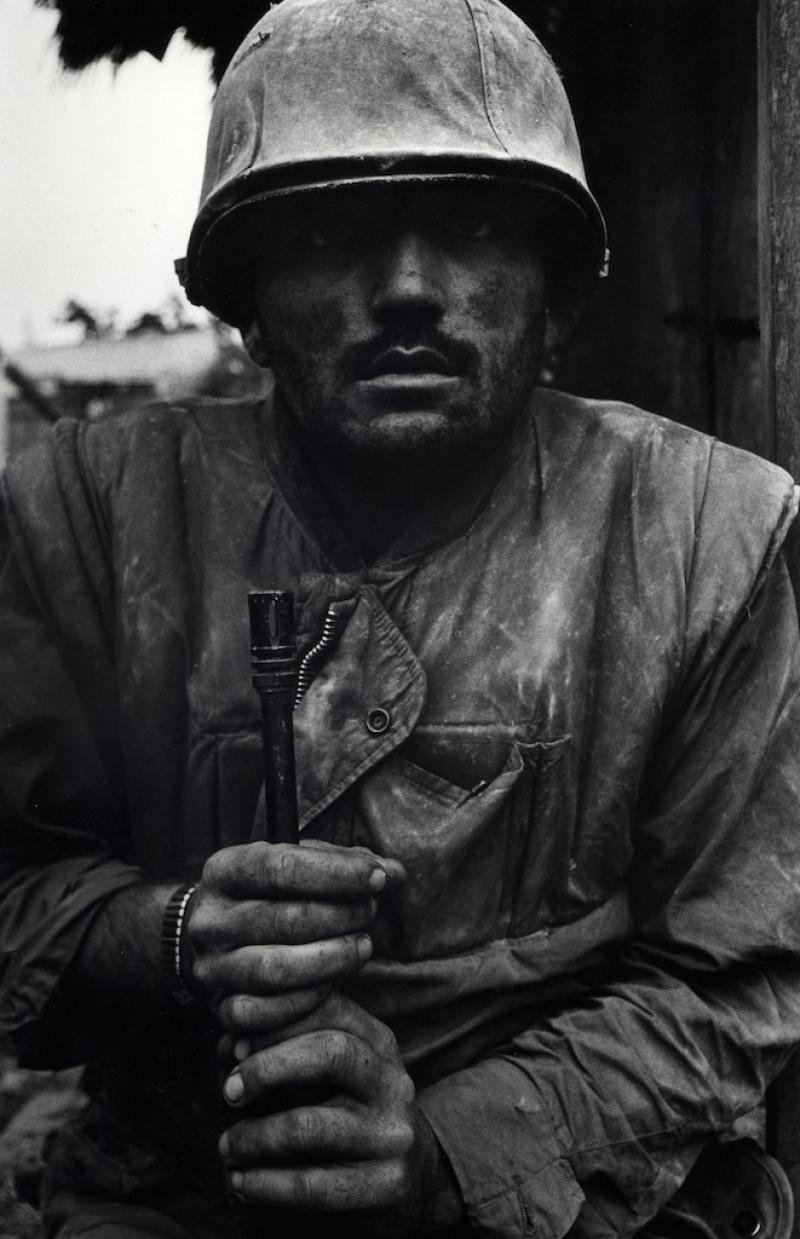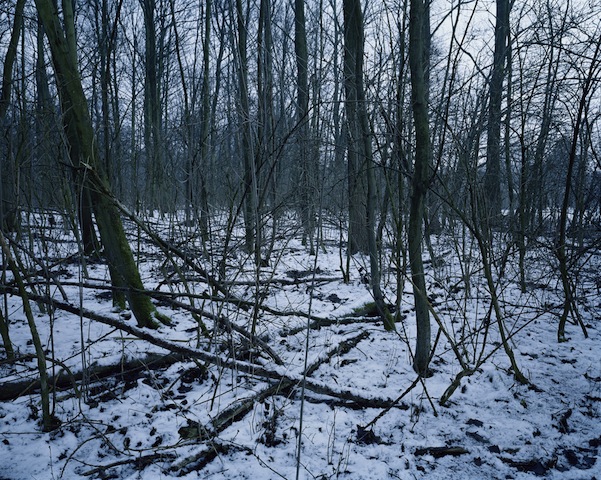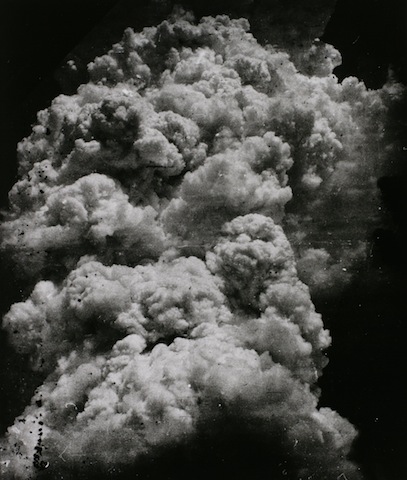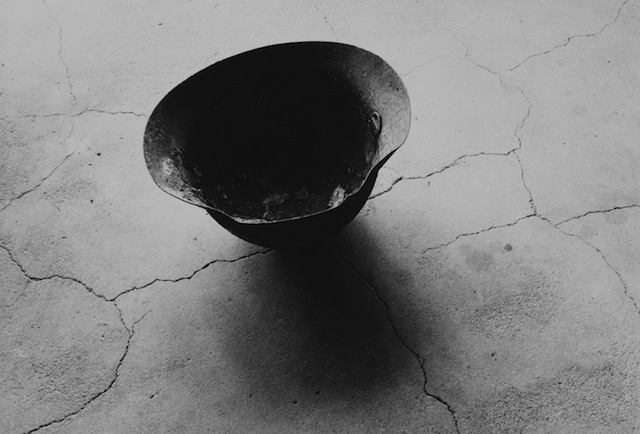Conflict, Time, Photography, Tate Modern | reviews, news & interviews
Conflict, Time, Photography, Tate Modern
Conflict, Time, Photography, Tate Modern
A powerful exhibition that takes the long view on the aftermath of war

This huge exhibition is an awesome and terrifying compilation of photographs of the sites of conflict, and the remnants of wars and conflicts of all kinds – local, civil, short, long, global, technological, industrial and hand-to-hand. Taken from the mid 19th century to the present, the images – hundreds, perhaps even well over a thousand – are oblique and often incomprehensible or unidentifiable without the expansive wall captions.
Some of the blandest or quietest imagery turns out to be of landscapes that have witnessed what we now would consider desecration, or at least from the 21st century, liberal point of view; unethical if not worse. An example is the quiet ending of this vast collection: in the last gallery there are five large photographs of rather humble and undistinguished landscapes – a meadow, a canal, a wood under snow – in a sequence called Shot at Dawn. They were taken by the young photographer Chloe Dawn Matthews as near to possible to the actual date, 99 years later, when the first Belgian, French and British deserters – many teenagers – were shot at dawn by their own side. (Pictured below: Chloe Dawn Matthews, Vebranden-Molen, West Vlaanderen, 2013)
 There are a few iconic photographs that most of us will have seen: blown up to an enormous size is Don McCullin’s portrait of a traumatised American soldier, Shell-Shocked US Marine, Vietnam, Hué, 1968 (main picture), taken just a few minutes after combat. His face is filthy, his hands are filthy; the effect is of a human zombie, and it is terrifying.
There are a few iconic photographs that most of us will have seen: blown up to an enormous size is Don McCullin’s portrait of a traumatised American soldier, Shell-Shocked US Marine, Vietnam, Hué, 1968 (main picture), taken just a few minutes after combat. His face is filthy, his hands are filthy; the effect is of a human zombie, and it is terrifying.
Further on, there are the iconic photographs taken seven months after the saturation bombing of Dresden, by the German photographer Richard Peter, published in East Germany as a book, Dresden: A Camera Accuses, in 1949. Undoubtedly these sequences have strikingly influenced the history of the destruction of Dresden (in the horrible hierarchy of the ghastliness of war, Hamburg for example suffered even more destruction and loss of life). Sentimental perhaps but achingly memorable is Peter’s image of a spared stone angel, on the roof of Dresden city hall, presiding over a panorama of a ruined city, rubble as far as the eye could see, punctuated by sharp verticals of windowless walls surrounding flattened emptiness of the buildings that once were.
 But we begin with extraordinary beauty. Toshio Fukada’s magnificent diptych of billowing clouds – and then we see that these, in black and white, memorialise that unbelievable sight of the mushroom clouds of the atomic bomb over Hiroshima, less than 20 minutes after the initial explosion (pictured right).
But we begin with extraordinary beauty. Toshio Fukada’s magnificent diptych of billowing clouds – and then we see that these, in black and white, memorialise that unbelievable sight of the mushroom clouds of the atomic bomb over Hiroshima, less than 20 minutes after the initial explosion (pictured right).
Innovations in terms of its organisation make the anthology a genuine game-changer. Photography may be a frozen moment (even though early photography needed long exposure times) but here distance in time is evoked as an organising principle. We start with The Moment and end many galleries later with 100 Years, indicating the distance between the taking of the photograph and the significance of the physical scene in terms of its history. The fact that this is an art exhibition raises the usual rather uncomfortable questions about the beauty of horror: of course the National Gallery, for instance, boasts endless scenes of people being tortured on their way to deification, but we know these are imaginary scenes, and anyway usually cannot even remember the story. But these photographs are real, even though Tate has rather cleverly not shown carnage.
The nearest we get to bodies are the skeletons revealed in a mass grave of executed Republicans during the Spanish Civil War, Patio civil, cementero San Rafael, Malaga, photographed by Luc Delahaye in 2009, 70 years after the event. And there is Steel Helmet with Skull Bone Fused by Atomic Bomb, Nagasaki, photographed in 1963 by Shomei Tomatsu (pictured below). But you need the label to understand what you are looking at. And it is unclear where Tomatsu found this object, although the ruins he photographed are an indictment of the decades that have elapsed since that cataclysmic event, with nothing like as much recovery as might have been expected. Needless to say, photographs of the Vietnamese victims of Agent Orange would tell us much the same story if they were on view.
 The Tate obviously and consciously makes no attempt to present an inclusive history of the sites and sights of conflicts and their legacies. The lack of comprehensiveness – and how could it be internationally comprehensive? - is curiously stimulating, making us remember all we can of other wars and revolutions which are not on view, and to appreciate even more the complexities and tragedies of those that are.
The Tate obviously and consciously makes no attempt to present an inclusive history of the sites and sights of conflicts and their legacies. The lack of comprehensiveness – and how could it be internationally comprehensive? - is curiously stimulating, making us remember all we can of other wars and revolutions which are not on view, and to appreciate even more the complexities and tragedies of those that are.
Furthermore, the variety of scale, colour, and sheer range of material, from books to blown-up photography, means that the exhibition constantly teases the eye, and avoids the deadening repetition that often bedevils the showing of photography in art galleries. Conflict is interpreted very broadly; yes there are the scenes evoking actual battles and broad devastation but there are also conscious evocations far from the actual event that is memorialised. We veer from documentation to conscious artifice; it is, too, a mix of practitioners – from reporters to "artists".
There are heartening moments amid the bleakness. A surprisingly serene essay on domesticity by Stephen Shore, Ukraine 2012-2013, 67 years later, on survivors – naturally elderly – of the Holocaust who were displaced and now live in their adopted country. The beguiling accumulation of everything from telephones to teapots in homely surroundings masks appalling histories.
This must rank as one of the most remarkable exhibitions of photography yet attempted, raising far more questions than it answers, endlessly provoking and totally memorable. Are the people behind the camera dispassionate, objective, subjective, involved, reporters, interpreters, documentarians, propagandists, historians, or all these things? And what do the images tell as well as show? Take a day or two to absorb – and then a stiff drink of whatever suits.
- Conflict, Time, Photography at Tate Modern until15 March 2015. The exhibition will travel next year to Essen and Dresden
Share this article
The future of Arts Journalism
You can stop theartsdesk.com closing!
We urgently need financing to survive. Our fundraising drive has thus far raised £49,000 but we need to reach £100,000 or we will be forced to close. Please contribute here: https://gofund.me/c3f6033d
And if you can forward this information to anyone who might assist, we’d be grateful.

Subscribe to theartsdesk.com
Thank you for continuing to read our work on theartsdesk.com. For unlimited access to every article in its entirety, including our archive of more than 15,000 pieces, we're asking for £5 per month or £40 per year. We feel it's a very good deal, and hope you do too.
To take a subscription now simply click here.
And if you're looking for that extra gift for a friend or family member, why not treat them to a theartsdesk.com gift subscription?
more Visual arts
 'We are bowled over!' Thank you for your messages of love and support
Much-appreciated words of commendation from readers and the cultural community
'We are bowled over!' Thank you for your messages of love and support
Much-appreciated words of commendation from readers and the cultural community
![SEX MONEY RACE RELIGION [2016] by Gilbert and George. Installation shot of Gilbert & George 21ST CENTURY PICTURES Hayward Gallery](https://theartsdesk.com/sites/default/files/styles/thumbnail/public/mastimages/Gilbert%20%26%20George_%2021ST%20CENTURY%20PICTURES.%20SEX%20MONEY%20RACE%20RELIGION%20%5B2016%5D.%20Photo_%20Mark%20Blower.%20Courtesy%20of%20the%20Gilbert%20%26%20George%20and%20the%20Hayward%20Gallery._0.jpg?itok=7tVsLyR-) Gilbert & George, 21st Century Pictures, Hayward Gallery review - brash, bright and not so beautiful
The couple's coloured photomontages shout louder than ever, causing sensory overload
Gilbert & George, 21st Century Pictures, Hayward Gallery review - brash, bright and not so beautiful
The couple's coloured photomontages shout louder than ever, causing sensory overload
 Lee Miller, Tate Britain review - an extraordinary career that remains an enigma
Fashion photographer, artist or war reporter; will the real Lee Miller please step forward?
Lee Miller, Tate Britain review - an extraordinary career that remains an enigma
Fashion photographer, artist or war reporter; will the real Lee Miller please step forward?
 Kerry James Marshall: The Histories, Royal Academy review - a triumphant celebration of blackness
Room after room of glorious paintings
Kerry James Marshall: The Histories, Royal Academy review - a triumphant celebration of blackness
Room after room of glorious paintings
 Folkestone Triennial 2025 - landscape, seascape, art lovers' escape
Locally rooted festival brings home many but not all global concerns
Folkestone Triennial 2025 - landscape, seascape, art lovers' escape
Locally rooted festival brings home many but not all global concerns
 Sir Brian Clarke (1953-2025) - a personal tribute
Remembering an artist with a gift for the transcendent
Sir Brian Clarke (1953-2025) - a personal tribute
Remembering an artist with a gift for the transcendent
 Emily Kam Kngwarray, Tate Modern review - glimpses of another world
Pictures that are an affirmation of belonging
Emily Kam Kngwarray, Tate Modern review - glimpses of another world
Pictures that are an affirmation of belonging
 Kiefer / Van Gogh, Royal Academy review - a pairing of opposites
Small scale intensity meets large scale melodrama
Kiefer / Van Gogh, Royal Academy review - a pairing of opposites
Small scale intensity meets large scale melodrama
 Jenny Saville: The Anatomy of Painting, National Portrait Gallery review - a protégé losing her way
A brilliant painter in search of a worthwhile subject
Jenny Saville: The Anatomy of Painting, National Portrait Gallery review - a protégé losing her way
A brilliant painter in search of a worthwhile subject
 Abstract Erotic, Courtauld Gallery review - sculpture that is sensuous, funny and subversive
Testing the boundaries of good taste, and winning
Abstract Erotic, Courtauld Gallery review - sculpture that is sensuous, funny and subversive
Testing the boundaries of good taste, and winning
 Edward Burra, Tate Britain review - watercolour made mainstream
Social satire with a nasty bite
Edward Burra, Tate Britain review - watercolour made mainstream
Social satire with a nasty bite
 Ithell Colquhoun, Tate Britain review - revelations of a weird and wonderful world
Emanations from the unconscious
Ithell Colquhoun, Tate Britain review - revelations of a weird and wonderful world
Emanations from the unconscious

Add comment